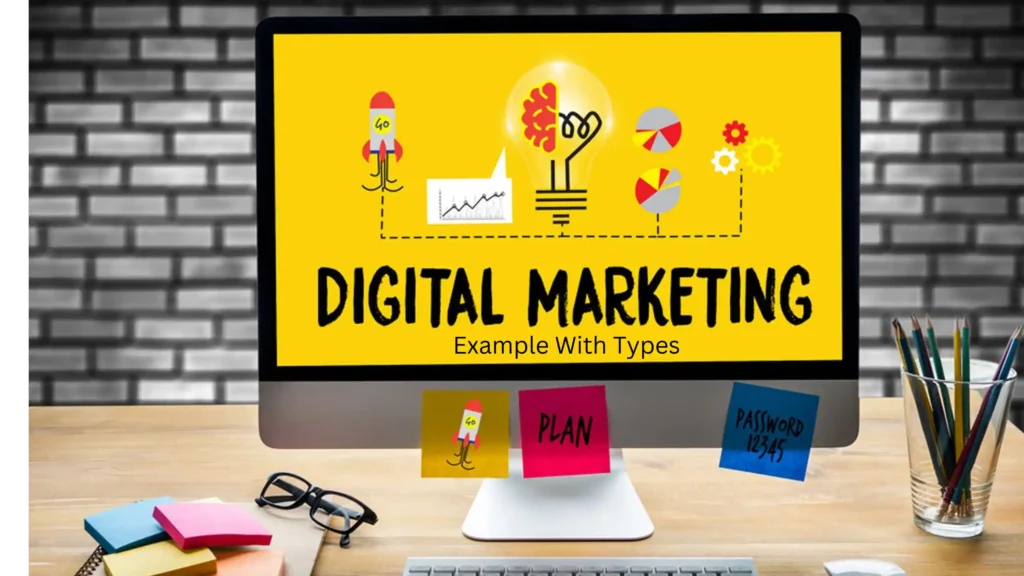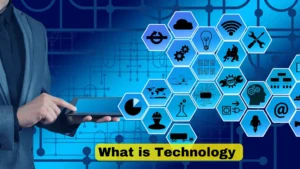Below is a complete discussion of digital marketing with examples through this post. Also its types.
think that Joey a digital marketer. He works as the head of digital marketing for Amazon. But how did Joey get here? A few years ago, Joey began to see a large number of opportunities popping up in the field of digital marketing.

To begin his entry into the field, he needed to understand what exactly digital marketing was, and what was so great about it. First, Joey learned that digital marketing was a form of marketing through which you could advertise to people digitally.
Digital marketing leveraged different channels like search engines, websites, social media platforms, emails, and mobile applications.
It would give marketers the opportunity to interact with and understand their audience better, and to increase the trust in their brand. Digital marketing would also show marketers advertisements to people based on their actions and preferences on the internet, while being less expensive than traditional forms of advertising.
After understanding the main concepts of digital marketing, Joey realized there was more to digital marketing than he initially thought. There were also many types of digital marketing.
Types like content marketing, search engine optimization, pay-per-click, social media marketing, email marketing, and affiliate marketing. And once he understood those types, he set up a digital marketing campaign for his uncle’s e-commerce website.
1. content marketing
Let’s have a look at what he came up with. First, Joey created content like blogs, videos, infographics, and case studies so that he could generate audience interest in the brand’s products or services. This was content marketing.
2. Search Engine Optimization
Next, he needed his audience to actually see his content. The first step was to create content on specific search keywords that were relevant to the target audience.
Joey would make optimizations on the have credible websites linking back to the content. And lo and behold, the website began ranking on the first page of the search results.
By continuous optimizations, Joey would continue to improve the ranking and ultimately make the website rank at the first position. This was SEO, or search engine optimization.
3. Pay Per-Click
And Joey could do all of this without spending a single penny. He could also drive traffic to the website with advertisements. But for this, he would have to pay a certain fee each time the ads were clicked.
He could have text ads that show up in search engine results, image ads and video ads that show up in websites, and much more. This was possible with the help of PPC, or pay per-click.
4. Social Media Marketing
However, Joey wasn’t done yet. To reach a larger audience, he needed to tap into social media platforms. He would use social media platforms like LinkedIn, YouTube, Facebook, and Instagram to advertise the brand’s content.
He would use these platforms to advertise the brand’s products or services with posts, images, videos, and more to bring out the brand’s story and engage with the brand’s audience, who spend a lot of time on social media.
Like PPC, he could use the platform to advertise the brand’s products or services with text, image, and video ads, which needed to be paid for. That’s social media marketing.
5. E-mail Marketing
Joey realized that a large amount of the audience weren’t visiting the brand’s website a second time. He needed to keep them engaged, nurture them, to make sure they purchased the product.
For this, he would send them emails that help them better understand the products they visited on the website and assist them in the buying process. He would also send emails to advertise his products or services to potential customers, that is, with email marketing.
6. Affiliate Marketing
finally, although Joey was able to grow the brand’s funnel, he wanted more traffic from third-party websites. This could be achieved with affiliate marketing.
Affiliates would promote the brand or product to their audiences for a fee with the help of email signups, registrations, conversions, subscriptions, etc.
I hope you understand the concept of digital marketing. If you have any questions about digital marketing, then write your question in comment section.
what is search engine optimization? Or what is seo?
Search engine optimization (SEO) is an essential practice for any website looking to improve its visibility and attract more organic traffic.
What is Content Marketing?
Content marketing is the development and distribution of relevant, useful content—blogs, newsletters, white papers, social media posts, emails, videos, and the like—to current and potential customers.
what is off page search engine optimization?
Off–page optimization refers to all the measures that can be taken outside the website to improve its ranking on search engine result pages.
what is PPC? Or, What is Pay-per-click?
Pay-per-click (PPC) is an internet advertising model used to drive traffic to websites, in which an advertiser pays a publisher (typically a search engine, website owner, or a network of websites) when the ad is clicked.
What is Social media marketing?
Social media marketing involves the use of social media platforms to connect with your audience to build your brand, increase sales, and drive website traffic.
what is Email marketing?
Email marketing is a direct marketing channel that lets businesses share new products, sales, and updates with customers on their contact lists.
what is Affiliate Marketing?
Affiliate marketing is a revenue-sharing marketing method in which an affiliate, such as a blogger or YouTuber, advertises a business’s goods or services to help it meet its sales or marketing goals.
social media marketing vacancy?
This is social media marketing job. For earn money.

